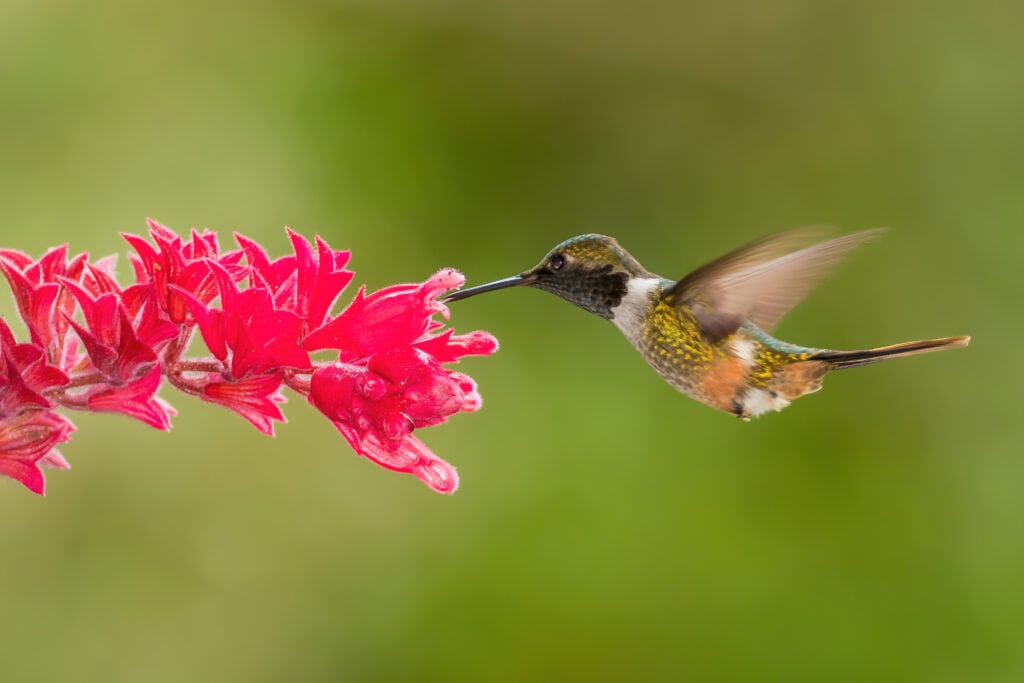Hummingbirds may look delicate and beautiful, but beneath that jewel-colored exterior these tiny nectar-sippers are territorial brawlers. Ask any seasoned birdwatcher and they’ll tell you: when two male hummers show up at one feeder there is bound to be a fight. And it isn’t just males. Hummingbirds have to consume enormous amounts of nectar to keep up with the metabolic output that their tiny bodies produce. Those lightning-fast wings require lots of energy. This means that sources of nectar (and sugar water) are a valuable and limited resource that even female hummingbirds will guard jealously.
Related Article: Nest Boxes Are Crucial to Cavity Nesting Birds in Deforested Areas
For this reason, it has largely been assumed that hummingbirds do not hybridize often. If they are so defensive of their territory with regards to their own species, that leaves few opportunities for mingling with other hummingbird species. There are some regions, however, where hummingbirds are known to hybridize. Allen’s Hummingbirds and Rufous Hummingbirds in Northern California and Oregon overlap enough to produce some hybrids.
Because hybridization is uncommon for hummingbirds, when researchers in Peru discovered an unusual bird, they did not immediately assume it was a hybrid. The bird’s gold collar feathers did not resemble any other hummingbird species. It was, in fact, suspected of being a brand new species. That is, until its DNA was tested.
Testing confirmed that the brilliant gold-throated bird was a genetic hybrid of the Pink-throated Brilliant Hummingbird and the Rufous-webbed Brilliant Hummingbird. Fascinatingly, the specimen was not a recent hybrid with half of its DNA belonging to each parent species. It was an uneven mix of the two, indicating that an ancestor from a previous generation was responsible for the hybridization.
Even more fascinating, though, are those gold feathers that made this bird stand out to begin with. Both parent species sport bright pink neck feathers. Scientists do not yet know how those parent genetics combined to create the hybrid’s gold-feathered collar.
This is made even more difficult to understand by the fact that hummingbird feathers utilize iridescence. Instead of just producing a pigment, the color and structure of hummingbird feathers manipulates light, creating that eye-catching color-shifting effect. For hybrid birds, this might mean new combinations of shape and color on a microscopic level. Whatever the cause of this hybrid bird’s unique coloration, its existence sheds new light on the hybridization of hummingbirds and the mechanisms by which these beloved birds create their iridescent feather displays.
Popular Article: Faith and Responsibility and the Conservation of the Sarus Crane

